What Is Scrap Value and Salvage Value | Types of Value in Civil Engineering
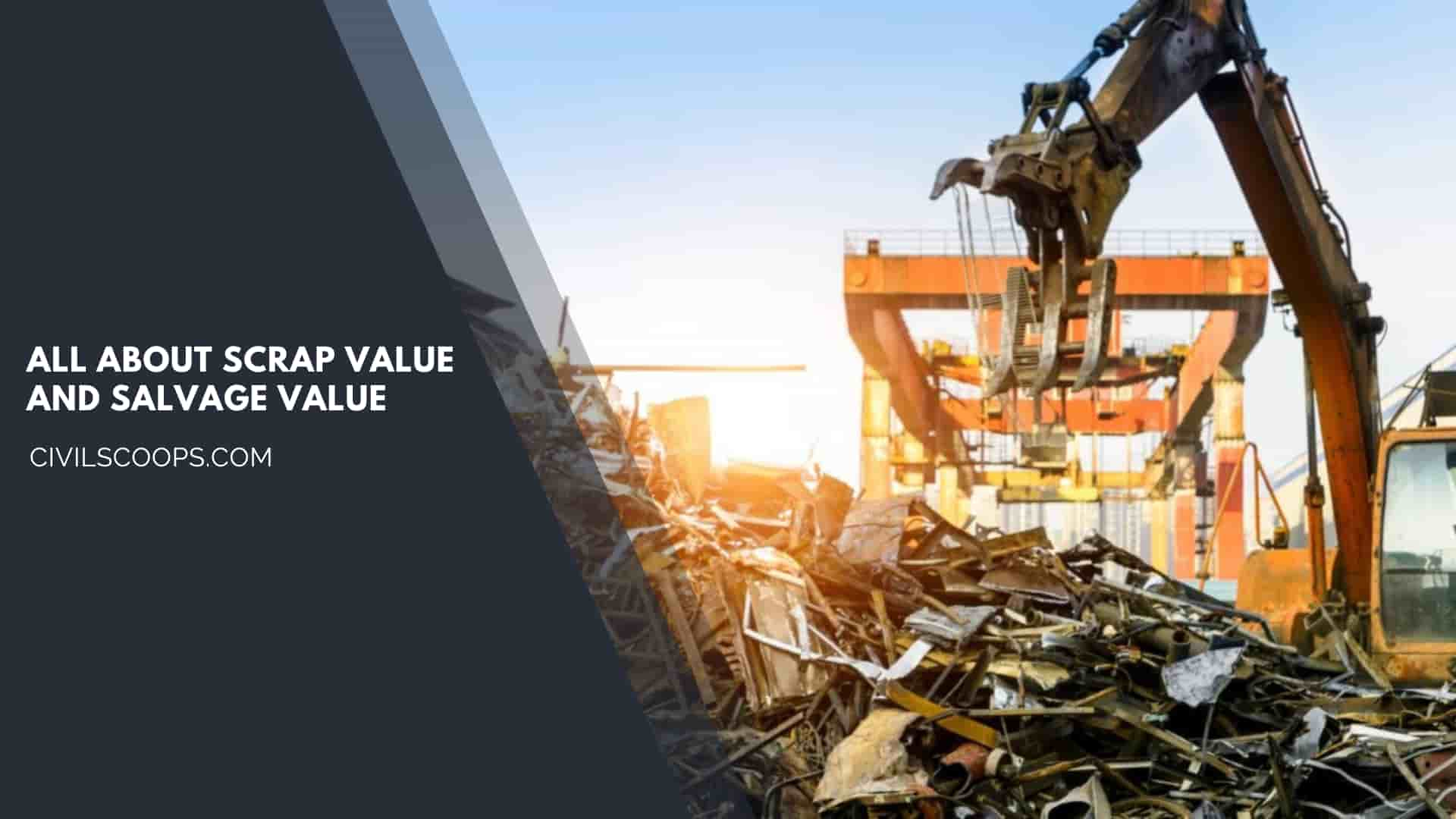
Table of Contents
What Is Scrap Value and Salvage Value in Civil Engineering?
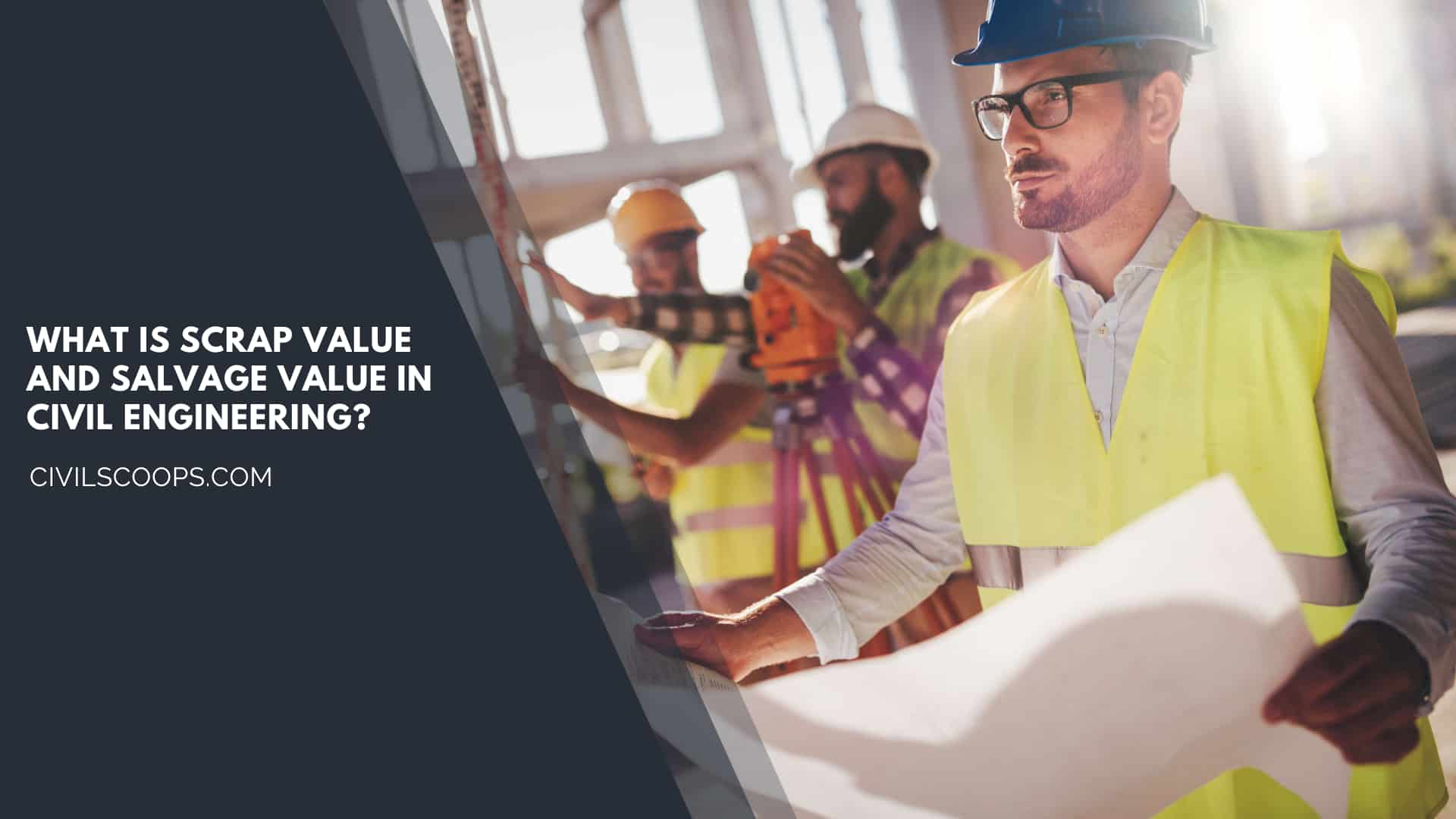
Scrap Value in Civil Engineering
The value of decommissioned materials at the end of the usefulness life of the property is completely meaningless, with the exception of sales as scrap. When an old building is sold after usable life, some useable material such as bricks, steel, timber products etc. can be obtained.
10 percent scrap value is considered for entire construction. It is sometimes referred to as a demolition value or trash value. In rare cases, if demolition or disassembly costs equal to or exceed the scrap value, it will become zero.
Salvage Value in Civil Engineering
The resale value at the end of an asset’s useful life is defined as the estimated or expected salvage value. The depreciation of the assets utilized is related to this characteristic.
The loss in the market value of an asset owing to time, wear and tear and obsolescence is characterized as the decline. Without regard to the cost of dismantling or removal of the object, the salvage value is assessed.
What Is Scrap Value?
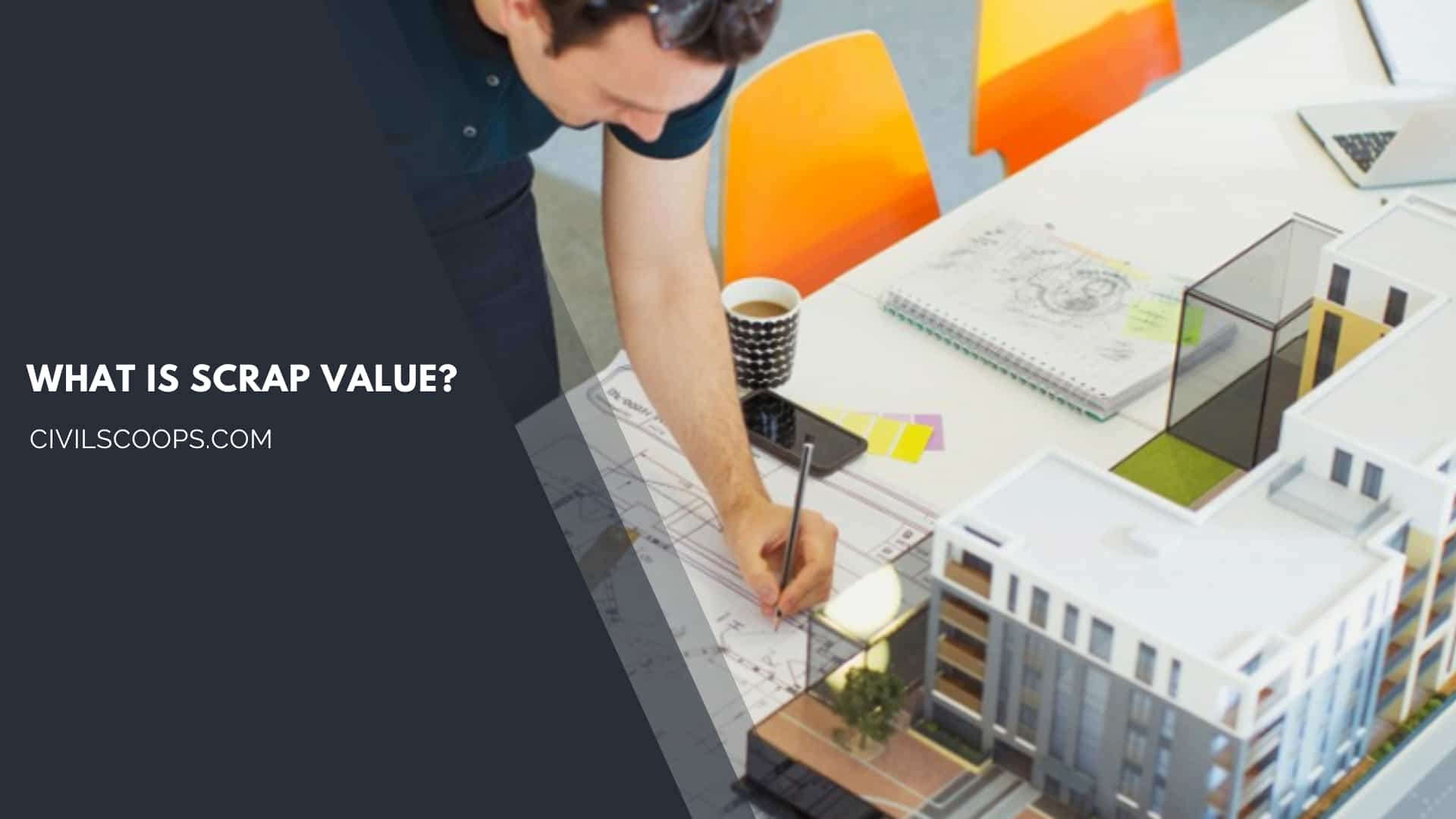
The value of a physical object’s various components when the item itself is judged no longer usable is referred to as scrap value. After a long-term asset, such as machinery, a car, or furniture, has served its purpose, it may be disposed of.
Scrap value can also be referred to as residual value, salvage value, or break-up value. The scrap value of a fixed asset is the anticipated cost that it may be sold for after full depreciation.
Also Read: What Is Building | Types of Building
What Is Salvage Value?
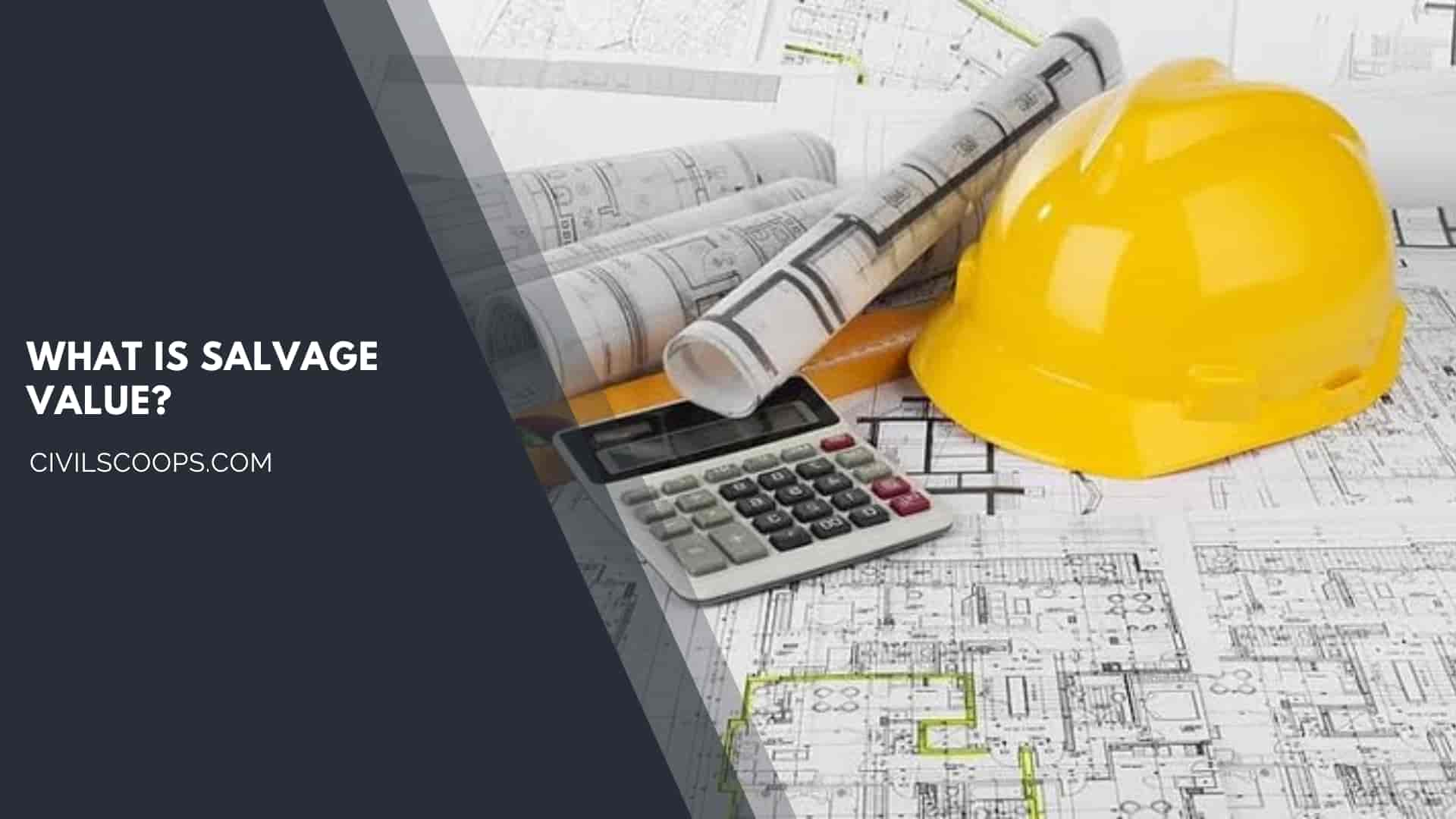
The salvage value of an asset is its projected resale value at the end of its useful life. It is deducted from the cost of a fixed asset to calculate the amount that will be depreciated. As a result, salvage value is included in the depreciation computation.
If determining a salvage value is too complex, or if the salvage value is projected to be low, it is not essential to include a salvage value in depreciation calculations.
Instead, just depreciate the fixed asset’s total cost over its useful life. Any profits from the asset’s ultimate disposal would subsequently be recorded as a gain.
The salvage value idea can be abused to estimate a high salvage value for particular assets, resulting in under-reporting of depreciation and, as a result, larger profits than would otherwise be the case. The salvage value is not reduced to its present worth.
Useful Article for You
- What Is a Highway Flyover
- What Is Grouting
- What Is a Pile Cap
- What Is a Bond Beam in Masonry
- What Is Sapwood
- What Is Crane
- What Is a Gable
- What Is Superelevation
- What Is Kerb
- What Is the Purpose of Washers
- What Is the Size of a Brick in Inches
- What Is Reinforced Masonry
- What Is Workability
- What Is Bond Breaker
- What Is Plasticizer in Concrete
- What Is Luminous Flux Vs Lumens
- What Is Caisson
- What Is an Undercoat
- What Is a Benchmark Surveying
- What Is Bracing in Construction
- What Is a Beam in Construction
- What Is the Standard Door Frame Size
- What Is a Spandrel Beam
- What Is a Fire Escape
- What Is a Weep Hole
- What Is Tie Beam
- What Is Fine Aggregate
- What Is Pony Wall
- What Is Flag Stone
- What Is Development Length
- What Is Cement Plaster
- What Is a Pitched Roof
- What Is Rafters
- What Is a Slab in Construction
- What Is a Monolithic Slab
- What Is Linear Distance
- What Is Shovel
- What Is Lintel in Construction
- What Is a Concept Sketch
- What Is Mezzanine Floor
- What Is Man Sand
- What Is Plaster Made Out of
- What Is a Floating Slab
- What Is Falsework
- What Is Bituminous
- What Is a Spillway
- What Is Curb and Gutter
- What Is Dampness
- What Is Lap Length
- What Is the Full Form of Fsi
- What Is Door Frame
- What Is Plinth Protection
- What Is Traffic Rotary
- What Is Grade Slab
- What Is Inverted Beam
- What Is Rolling Margin of Steel
- What Is Modulus of Rupture
Types of Value in Civil Engineering
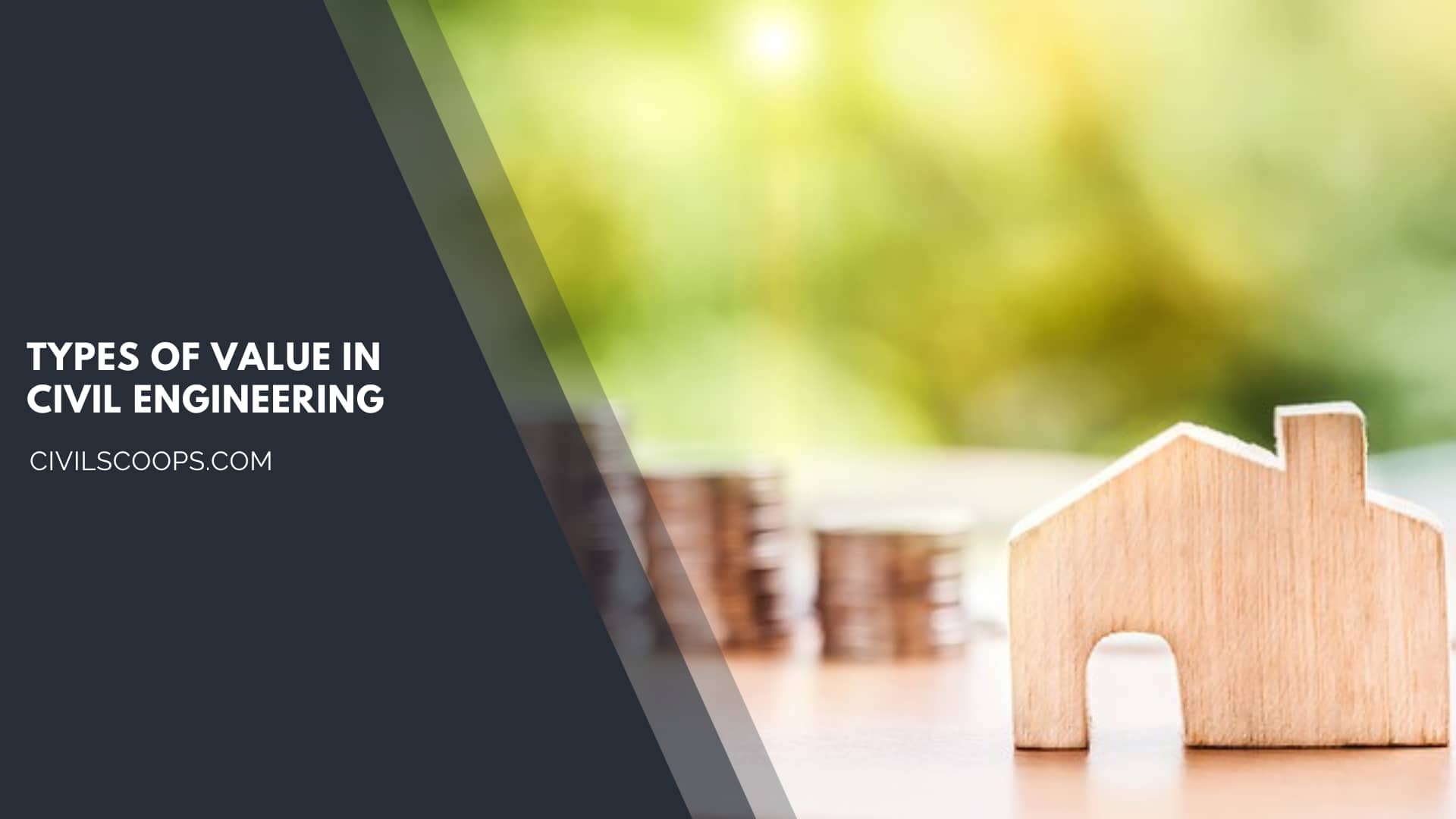
The worth or utility of a structure, property, machinery, equipment, or other item is referred to as value. Value fluctuates over time and is always influenced by supply and demand.
The property’s value in a short period of time may be greater than its current worth or price. There are many different types of values that are utilized when estimating and costing a product.
1. Scrap Value
The value of dismantled materials is known as scrap value. When the life of a structure comes to an end at the end of its useful life, the deconstructed materials such as steel, timber, bricks, and other materials will fetch a particular amount of money, which is known as the Scrap Value of that building.
2. Salvage Value
At the end of the utility period it’s the value of the building without dismantling. For example, a machine may be sold and the same machine can be purchased from the other person after it has finished its normal lifetime or when use is unfavorable. The price that he has purchased is called the value of salvage and is called the value of the sale.
3. Market Value
A market value of the house is the sum that may be gained from the open market anywhere at given moment if the property is placed up for sale. Market value can fluctuate depending on production and consumption.
Market value fluctuates for a variety of factors, including changes in industry, fashion, labor and material costs, shipping costs, and etc.
4. Book Value
The amount reflected in the account book after depreciation is referred to as the book value. This Book Value of a property in a given year has been the original cost less the amount of depreciation up to that point in the preceding year.
The Book Value is determined by the amount of depreciation permitted each year and will steadily grow year after year until it reaches Scrap Value at the conclusion of the property’s utility period.
5. Potential Value
The value of a property that is capable of generating a higher return owing to its alternative use, favorable planning, or provision of development works is referred to as its potential value.
6. Sentimental Value
Sentimental Value occurs when a property is sold or acquired for a greater price than its market value owing to the owner’s or purchaser’s emotions. The following are the primary reasons of Sentimental value.
Because the owner may be emotionally tied to the property, he or she may demand a high price. The location and type of property may fit a certain potential purchaser, making it suitable for his or her needs and having distinctive value to him or her.
If the property is listed for sale and two prospective buyers are motivated to outbid each other, the property’s worth will undoubtedly rise over its current market value.
7. Speculation Value
When a property is acquired with the intention of reselling it for a profit after a certain period of time, the amount paid is referred to as Speculation Value.
For example, if the government plans to build a new road or expand an existing road in a certain region, that area will get greater value from both actual and market worth, and speculators would always buy such property at a low cost and resell it after a certain period of time. The price at which he buys the property is referred to as the Speculation Value.
8. Distress Value
Distress Value is when a property is sold for a lower price than what it is worth on the open market. This might be attributed to a variety of factors, some of which are listed below.
Due to a financial problem, the vendor sells the store or property for a very cheap price. Riots, earthquakes, and other natural disasters cause widespread panic. There is a disagreement between the couples. Because of sentimental reasons.
9. Accommodation Value
Because of the restricted length, depth and number of purchasers of these properties, small strips or land cannot be developed individually. These lines can be sold exclusively to neighboring landowners who offer only modest prices. This value is referred to as a lodging value.
10. Ratable Value
Ratable worth refers to the net annual value of a property determined after yearly repairs have been deducted from gross earnings. At a specific proportion, municipal and other taxes shall be levied on the property’s value.
Also Read: What Is Seasoning of Timber | Type of Seasoning of Timber | Benefit Seasoning of Timber
Useful Article for You
- How Wide Is a Cinder Block
- How Much Is a Coffered Ceiling
- How to Make Mortar
- How Long Does Hempcrete Last
- How to Use a Hand Sight Level
- How to Construction
- How to Build a Lean to Roof
- How Are Tunnels Built
- How to Layout a Building
- How Wide Is a Car Parking Space
- How Do Shear Walls Work
- How to Measure Concrete Slump
- How Are Bridge Foundations Built
- How to Use Washers with Screws
- How Dense Is Sand
- How High Is a Window from the Floor
- How to Fix Spalling Concrete Foundation
- How Does a Beam Bridge Work
- How Do They Pour Concrete Under Water
- How Does a Sewer System Work
- How High Are Countertops
- How to Seal Brick Wall Interior
- How to Resurface Cement
- How to Use Portland Cement
- How Is Plaster Made
- How to Find Fineness Modulus
- How to Get Rid of Spray Paint Smell on Metal
- How Many Types of Slope Are There
- How Big Is a Stair Landing
- How Does Rebar Help Concrete
- How to Identify a Load Bearing Wall
- How to Get Paint Off Concrete Without Chemicals
- How to Fix Water Damaged Drywall
- How Much to Get Septic Pumped
- How to Cut a Nail or Screw
- How Long Does Wet Concrete Take to Dry
- How Is Varnish Made
- How Does Ejector Pump Work
- How Does a Cantilever Bridge Work
- How Does Hydrometer Work
- How to Get Wet Blood Out of Carpet
- How to Build House on Slope
- How Thick Is Plaster Wall
- How Suspension Bridges Work
- How to Seal a Concrete Roof
- How Was Cement Invented
- How to Calculate Area of Steel
- How to Check Silt Content in Sand
- How a Building Is Constructed
- How Are Roads Classified in India
- How Many Types of Cement in India
- How to Find Contour Interval
- How to Stop Leakage from Ceiling
- How Hardness of Brick Is Tested
- How Many Types of Paint Brushes Are There
- How to Calculate Skirting Area
What Is Value Civil Engineering?

In construction projects, value engineering is utilized to offer a clear and thorough analysis of how to effectively fulfil the project’s goals. When combined with cost estimates, value engineering allows for an impartial assessment of the whole building project.
This evaluation process, which is generally conducted during a Value Engineering workshop, is centered on a single goal: to offer the most value at the lowest cost.
Every construction project’s ultimate objective is to be on scope, on budget, and on schedule. This necessitates a collaborative and expert independent evaluation of all aspects of the building process.
Value Engineering is an intentional and explicit collection of methods aimed at searching for optimal value for initial and long-term investments. Value engineering is not an evaluation of designs, peers and costs.
It is a systematic, creative effort that evaluates the project needs to carry out the key tasks at the lowest overall cost of the project (capital, employee, energy, maintenance).
Also Read: New Civil Engineering Technology 2023
Property Valuation System
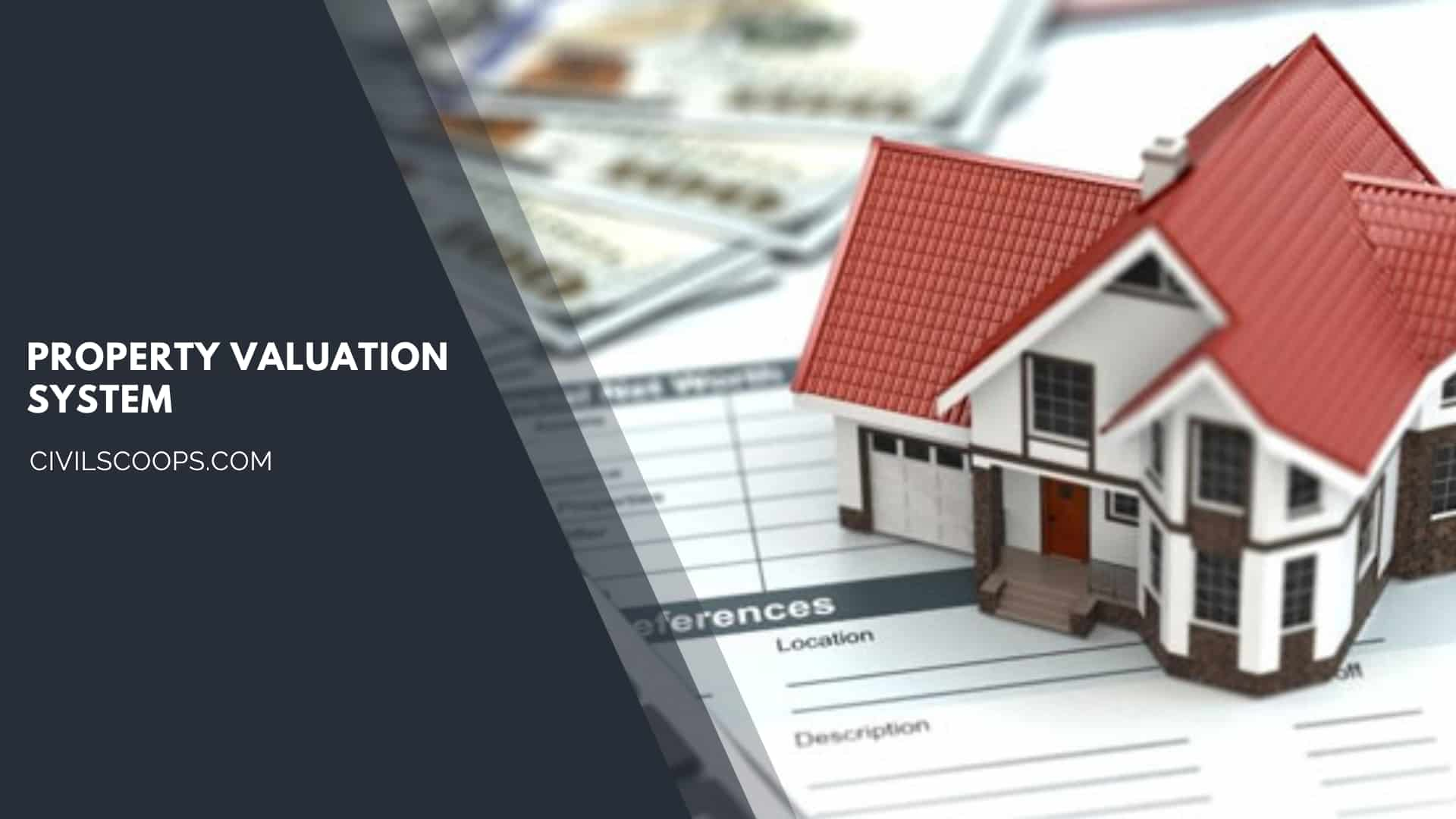
Property valuation systems are crucial for property experts who want to value property for sale or rent, as well as financial organizations like banks and credit unions.
Government agencies require reliable statistical data as well as valuation tools. Property mode has considerable expertise in developing excellent user interfaces and valuation systems to meet these objectives.
The ability to create useful valuation systems is based on the integration of many diverse data streams from government, consumers, banks, and property professionals and portals into a comprehensive data set to provide reliable and solid valuation processes that can still be manually adjusted based on non-statistical influences on property values.
[su_box title=”FAQ” style=”default” box_color=”#333333″ title_color=”#FFFFFF” radius=”3″ class=”” id=””]
What Is Scrap Value and Salvage Value?
“Salvage value is the amount that can probably be obtained from a damaged item or for the components of a damaged item.” “Scrap value is a kind of savage value and is the amount that would probably be obtained for a property that was being broken up to obtain materials.
Types of Value
- Scrap Value
- Salvage Value
- Market Value
- Book Value
- Potential Value
- Sentimental Value
What Is Scrap Value?
Scrap Value: Scrap Value is the sell value of dismantled materials of an asset at the end of its useful life. Scrap Value is counted in the calculation of depreciation of a property, generally @10% of the cost of the structure.
What Is Salvage Value?
Salvage value is defined as an estimated or expected resale value of an asset at the end of its useful life. It is a parameter that is associated with the depreciation of the assets used in the business.
Salvage Value of Building
Salvage value is the estimated book value of an asset after depreciation is complete, based on what a company expects to receive in exchange for the asset at the end of its useful life. As such, an asset’s estimated salvage value is an important component in the calculation of a depreciation schedule.
Scrap Value Formula
Example of How to Use Scrap Value
Using the straight-line depreciation method, the annual depreciation per year will be 12% x $75,000 = $9,000. The residual amount that the company can get if it disposes of the machinery after eight years is as follows: Scrap value = $75,000 – ($9,000 x 8) = $3,000.
How to Calculate Salvage Value?
As is clear from the definition, the value of equipment or machinery after its useful life is termed the salvage value. Simply put, when we deduct the depreciation of the machinery from its original cost, we get the salvage value.
How Is Salvage Value Calculated?
First, it may use the percentage of the original cost method. This method assumes that the salvage value is a percentage of the asset’s original cost. To calculate the salvage value using this method, multiply the asset’s original cost by the salvage value percentage.
Salvage Value Vs Residual Value
The residual value, also known as salvage value, is the estimated value of a fixed asset at the end of its lease term or useful life.
What Does Salvage Value Mean?
Salvage value or Scrap Value is the estimated value of an asset after its useful life is over and, therefore, cannot be used for its original purpose. For example, if the machinery of a company has a life of 5 years and at the end of 5 years, its value is only $5000, then $5000 is the salvage value.
What Is Salvage Value Example?
Salvage value is the amount for which the asset can be sold at the end of its useful life. 2 For example if a construction company can sell an inoperable crane for parts at a price of Rs 5,000, that is the crane’s salvage value.
What Is Salvage Value in Depreciation?
Key Takeaways. Salvage value is the book value of an asset after all depreciation has been fully expensed. The salvage value of an asset is based on what a company expects to receive in exchange for selling or parting out the asset at the end of its useful life.
What Is the Salvage Value of a Building?
The salvage value of a property is the estimated value or expected resale value of a building or property at the end of its useful life.
Is Salvage Value the Same as Scrap Value?
Salvage value is the amount that an asset is estimated to be worth at the end of its useful life. It is also known as scrap value or residual value, and is used when determining the annual depreciation expense of an asset.
[/su_box]
[su_note note_color=”#F2F2F2 ” text_color=”#333333″ radius=”3″ class=”” id=””]
Like this post? Share it with your friends!
Suggested Read –
- Corian Countertops
- All About Mix Design
- All About Repointing Brick
- All About Prismatic Compass Surveying
- Dynamic Vs Kinematic Viscosity (Difference & Definition)
[/su_note]
Originally posted 2023-10-21 10:46:03.
